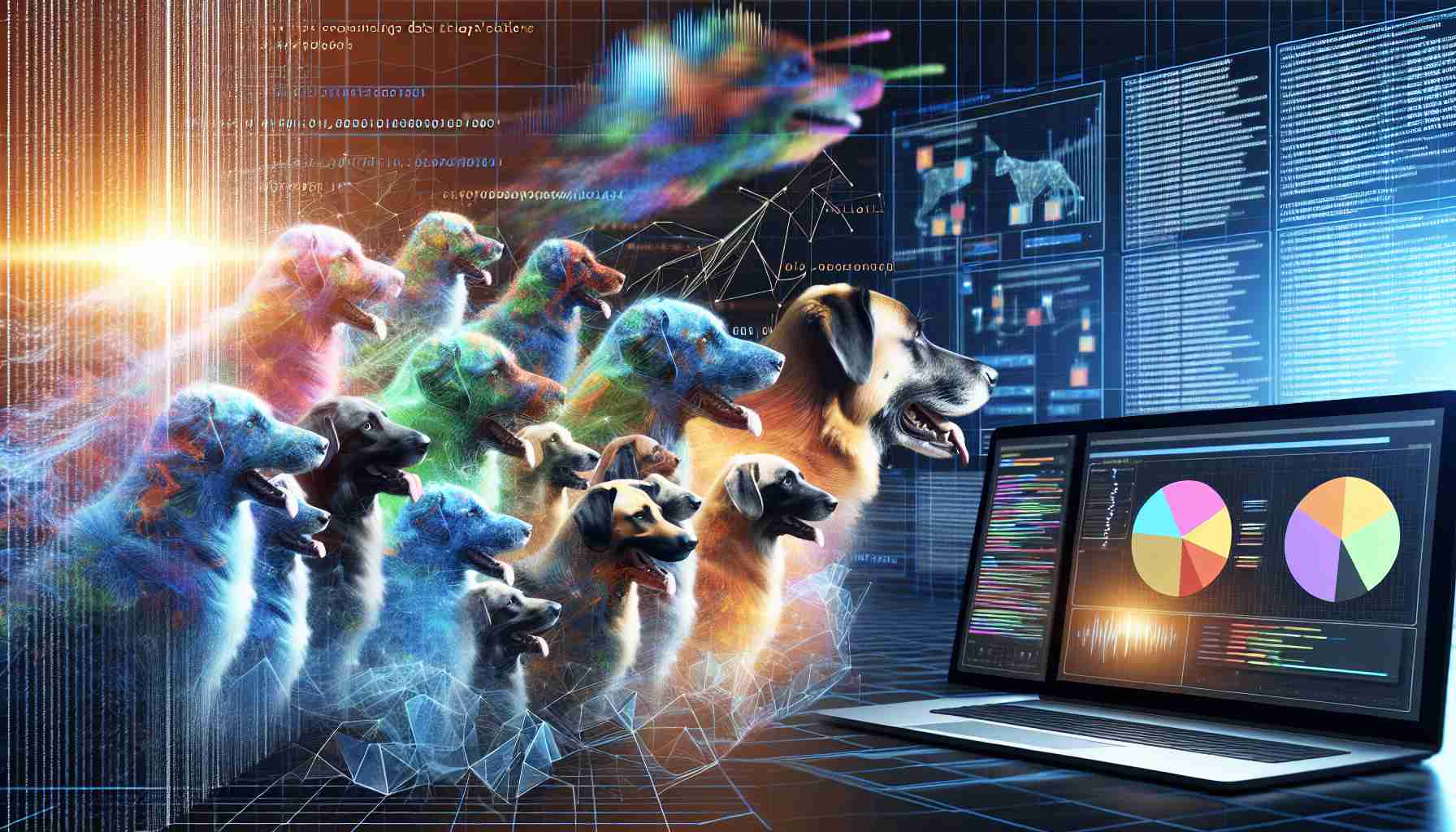Scientists have been exploring new territories in understanding animal communication, especially focusing on our canine companions. A diverse collection of barks, growls, and whines from 74 dogs of various breeds, ages, and sexes were recorded to investigate whether researchers could overcome the limitations of insufficient data. These acoustic samples were then fed into a machine learning model, a type of algorithm adept at recognizing patterns within large datasets, originally designed for analyzing human speech.
Remarkably, this machine learning model proved to be adept at deciphering dog communication. The research team achieved an average accuracy rate of 70% across various tests conducted. It was a pioneering moment, marking the first instance where technology optimized for human speech was utilized to aid in decoding animal communication. Through this innovative use of established technologies, researchers have opened the door to a better understanding of how our furry friends express themselves. The implications of this could be vast, shedding light on animal emotions, needs, and the inter-species communication barriers that we might soon be able to bridge thanks to advancements in artificial intelligence and computational linguistics.
Important Questions and Answers:
What are the key challenges in using machine learning for understanding canine communication?
The key challenges include:
– Collecting a sufficiently large and diverse dataset of dog vocalizations, which is necessary for training robust machine learning models.
– Capturing the context of vocalizations, as the meaning of a sound can vary greatly depending on the situation.
– Interpreting the subtleties and nuances within the vocal expression of dogs, which may not always be consistent across different breeds or even individual dogs.
– Differentiating between sounds that are communicative and those that are not intended to convey any specific message.
Are there any controversies in the field?
There could be ethical concerns related to the interpretation of animal communications and the potential for misrepresentation of an animal’s emotions or needs. Additionally, there’s debate on the extent to which human frameworks for communication can be applied to understanding animals and whether it risks anthropomorphizing animal behavior.
Advantages:
– Could significantly improve human understanding of dogs, leading to better welfare and care for these animals.
– Might lead to the development of devices or apps that can interpret dog barks and noises in real time, improving communication between dogs and owners.
– Can contribute to the study of animal behavior and cognition, providing insights into non-human forms of intelligence.
Disadvantages:
– There is a risk of overgeneralization or inaccurate interpretation of canine vocalizations if the machine learning models are not trained on an adequately diverse dataset.
– Dependency on technology could potentially limit the natural development of understanding and bonding between owners and their dogs.
– The technology could be misused, such as creating methods to manipulate animal behavior unnaturally.
For further general information and exploration of machine learning, artificial intelligence, and computational linguistics, you may visit the following legitimate websites:
– IBM’s AI and machine learning
– Massachusetts Institute of Technology (MIT)
– Stanford University’s AI Lab
Please note that the links provided above lead to the main domains and not to specific subpages or articles.
The source of the article is from the blog karacasanime.com.ve

